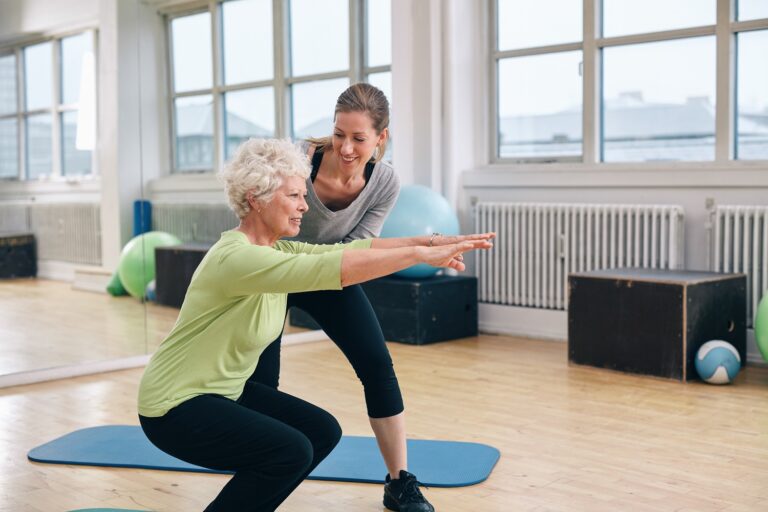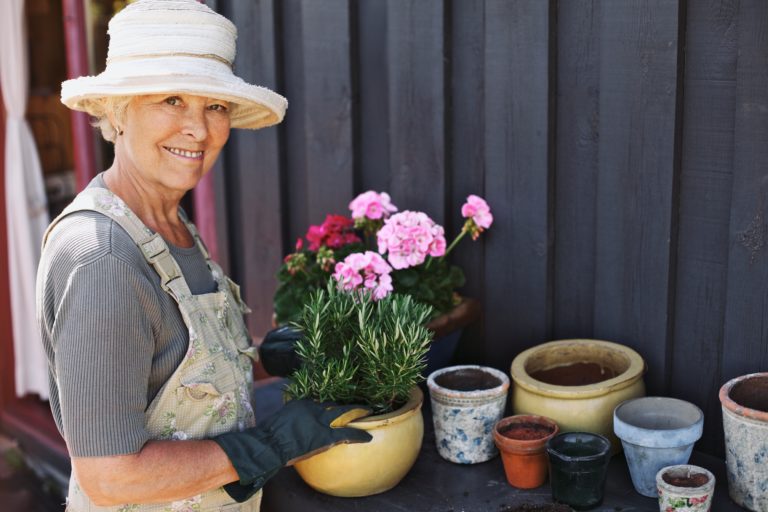What is Osteoporosis? – Symptoms, Causes & Treatment
Learn more about osteoporosis, its symptoms and what you can do about it.

Osteoporosis is a common disease affecting more than one million Australians, causing weakened bones that can lead to an increased risk of fractures and bone breaks, such as hip fractures.
What exactly is osteoporosis?
According to the Australian Institute of Health and Welfare, osteoporosis, meaning ‘porous bones’, occurs when bone tissue loses essential minerals such as calcium more quickly than the body can replace them and this results in a loss of bone density. As a result, even a minor bump or accident can cause a fracture or broken bone.
Both men and women can develop osteoporosis, and it is most common in adults over the age of 50. Postmenopausal women are at a greater risk of developing the disease because of the rapid decline in oestrogen levels that occur during menopause. When oestrogen levels decrease, bones lose calcium and other minerals at a much faster rate. While men also lose bone as they age, testosterone levels decline at a more gradual rate, so their bone mass remains adequate until later in life. A bone density test can reveal the loss of bone density.

What are the symptoms of osteoporosis?
The most common symptoms include:
- Breaking or fracturing a bone from a mild injury, such as a minor bump or falling over
- Gradual height loss and stooped posture.
- Back pain associated with weakened bones.
- Stress fractures or tiny cracks in the bones, often mistaken for joint or muscle pain.
- Fractures from previous low-level injuries
Causes and risk factors for osteoporosis
According to Healthy Bones Australia, the decrease in bone density of people who experience osteoporosis can result in bones becoming more fragile and easily broken. While everyone’s bones become weaker as they age, some people experience a more rapid decline in bone health than others.
There are many risk factors that can increase the risk of developing osteoporosis. Some of these risk factors can be reduced through lifestyle changes, while some, such as your age, cannot be changed.
Risk factors out of your control:
- being over 70 years of age
- being female
- your parents having had hip fractures
- early menopause.
Risk factors within your control:
- not being physically active
- smoking
- high alcohol intake
- not eating enough energy-rich foods, and foods high in iron, calcium, vitamin D or protein
- low muscle mass and strength
- low body weight
If you suffer from certain medical conditions, you’re also more likely to develop osteoporosis. Other risk factors include:
- diseases that cause bone loss, such as rheumatoid arthritis
- hypogonadism or early menopause
- chronic liver or kidney disease
- coeliac disease and inflammatory bowel disease
- Cushing’s syndrome
Some breast cancer treatments can also reduce bone mineral density. As discussed by Breast Cancer Network Australia, the female sex hormone oestrogen helps to protect bones and some breast cancer treatments can reduce bone mineral density by reducing oestrogen levels or stopping oestrogen from working. Treatments such as hormone-blocking therapies, chemotherapy (and associated anti-nausea medicines) and ovarian suppression, can reduce bone density and increase your risk of a bone fracture.
For men, some treatments for prostate cancer may work in a similar way, by reducing testosterone to slow cancer growth. Again, this may lead to bone weakening and an increased risk of osteoporosis.
You can learn more about how other factors impact your risk of osteoporosis by using the ‘Know your bones self-assessment tool’ which was developed by Healthy Bones Australia and the Garvan Institute of Medical Research. The online self-assessment tool only takes between 5-10 minutes to complete, and your results can be discussed with your GP or health professional.

Osteoporosis diagnosed
Osteoporosis is diagnosed through a bone density test, which is sometimes called a DXA or DEXA test, usually requiring a referral from a healthcare professional. This non-invasive, painless procedure measures your bone density at the hip and spine, helping to detect osteopenia (low bone density) or osteoporosis.
The scan will ultimately help determine if any action is needed to protect your bone health. If your bone health is normal, then maintaining adequate calcium, vitamin D and exercise remains important. If the result shows you have osteopenia (low bone density) or osteoporosis, it is essential that action is taken to protect your bones.
How to treat osteoporosis
While there's no cure, you can treat osteoporosis to protect your bone health. Comprehensive treatment plans can include medication and lifestyle changes to strengthen the bones, reducing the likelihood of breakages. Ensuring you consume a healthy diet with enough calcium and vitamin D is vital for building healthy bone structure.
Healthy Bones Australia explains that you should not be intimidated by exercise if you have weakened bones through osteoporosis or osteopenia. There are 3 types of exercises recommended in the Healthy Bones Australia exercise program to support bone health. These are suitable for people with low bone density and when performed under supervision include:
- Weight bearing impact loading - weight bearing exercises that work against gravity to stimulate bone and improve strength.
- Resistance training - Moves that emphasis power and balance through the use of added weights to enhance strength and stability.
- Balance training - Exercises that strengthen the muscles that keep you upright such as your legs and core which helps to improve stability and assist in preventing falls.
Osteoporosis prevention
Though no single method can entirely prevent osteoporosis, some strategies can reduce the risk, including:
- Reducing alcohol intake and quitting smoking.
- Incorporating bone-strengthening exercises, like brisk walking.
- Ensuring adequate vitamin D levels for to absorb calcium and promote healthy bones.
- Weight bearing exercises and balance training to improve stability.
By treating osteoporosis early, you can preserve your bone health and reduce the likelihood of bone fractures as you age. Consult with a healthcare professional if you're concerned about risk factors for osteoporosis or experiencing symptoms. By understanding and proactively managing conditions like osteoporosis, you can continue to live your best life.
Did you know?
- Over 1 million Australians have osteoporosis.
- In those aged 50 years and over, 66% have osteoporosis.
- Osteoporosis results in more than 173,000 bone fractures and breaks in Australia each year.
- Five times more women aged 50 years and over reported having osteoporosis compared to men.
- The most common trauma fracture sites are the hip (31%), forearm (15%), lumbar spine and pelvis (12%).
- There are 206 bones in the body – the smallest bone is in our ear, and the largest is in our leg.

Keep healthy and active with IRT
At IRT, we’ve been helping older Australians live their best lives for more than 50 years. We offer retirement living, residential aged care and home care services in various locations across NSW, ACT and Qld. We believe it's our values as a community-owned provider that help us to be the best at what we do.
Find out moreYou may also like
How to take care of ageing parents
As our parents get older, even if they are completely independent, it’s possible they will need help with some tasks.
Downsizing your home for retirement: where to begin
Have you been thinking about downsizing your home? We help you make sense of this life-changing decision that can reap so many benefits as you…


